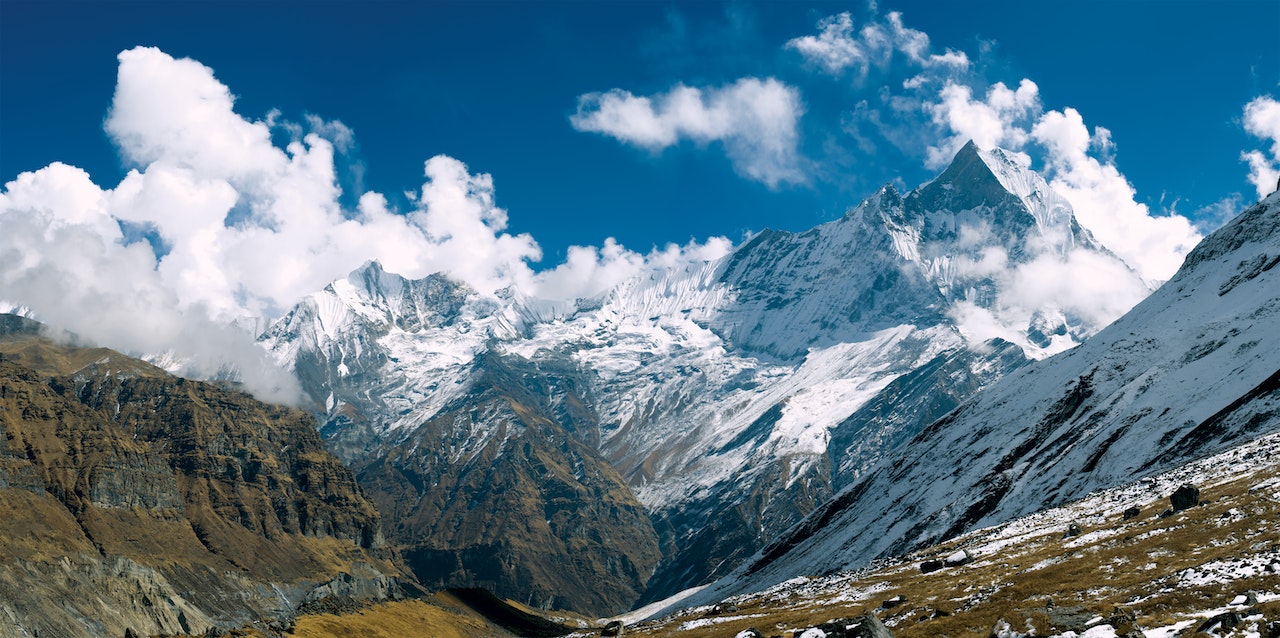Embarking on a journey to the Annapurna Base Camp (ABC) from Kathmandu’s Tribhuvan International Airport is an exciting adventure that offers breathtaking landscapes and a deep immersion into the heart of the Himalayas. To ensure a successful and enjoyable trip, careful planning is essential. Here’s a step-by-step guide to help you plan your trek to the Annapurna Base Camp:
| Quick Information | Recommendations |
|---|---|
| Best Time to Visit for Families and Kids | Consider visiting during the pre-monsoon season (April to June) for mild weather and suitable conditions for families and kids. |
| Best Time to Visit for Avoiding Crowds | To avoid crowds, plan your trek during the shoulder seasons of autumn (September to November) or spring (March to April). |
| When to Visit on a Budget | Traveling during the monsoon season (June to August) may offer budget-friendly options, but trekking conditions can be challenging. |
| When to Visit for Good Weather | Experience the best weather during the autumn months (September to November) with clear skies and pleasant temperatures. |
| Travel Options | Options include trekking on foot, as there are no motorable roads. Biking is not feasible; instead, rely on local guides and porters for the trek. |
| Health and safety measures | Stay informed about health and safety guidelines from the official Nepal Tourism Board and Annapurna Conservation Area Project (ACAP). |
| Cultural events and festivals | Check local festivals and events on the Visit Nepal Year 2022 official website. |
| Visa and entry requirements | Obtain visa information from the Department of Immigration Nepal. |
| Language Compatibility | Nepali is the primary language, but English is widely understood, especially in tourist areas. |
| Accommodation options | Accommodations are available in teahouses along the trekking route. Book through local trekking agencies or check options on Booking.com. |
| Popular Local cuisine | Savor local dishes like dal bhat (lentil soup with rice), momo (dumplings), and yak cheese. |
| Transportation accessibility | Reach the starting point, Nayapul, by private vehicle or bus from Pokhara. |
| Currency Exchange and Financial Services | Carry Nepalese Rupees (NPR); exchange currency in Pokhara before the trek. |
| Local Etiquette and Customs | Respect local customs; remove shoes before entering homes and religious sites. |
| Must Travel Gear to Pack | Essential gear includes trekking boots, a backpack, warm clothing, a first aid kit, and a good-quality sleeping bag. |

Research and Itinerary Planning:
- Research the best time to visit: The ideal trekking seasons are spring (March to May) and autumn (September to November) when the weather is relatively stable and clear.
- Determine the duration: The Annapurna Base Camp trek usually takes around 7-12 days, depending on your pace and acclimatization needs.
- Plan the route: The common starting point is Nayapul, accessible from Pokhara. The trek takes you through picturesque villages, terraced fields, rhododendron forests, and alpine landscapes before reaching the base camp.
Trekking Permits and Regulations:
- Obtain necessary permits: You’ll need two permits – the Annapurna Conservation Area Permit (ACAP) and the Trekkers’ Information Management System (TIMS) card. These can be obtained in Kathmandu or Pokhara.
Physical Fitness and Training:
- Prepare your body: The trek involves challenging ascents and descents at high altitudes. Physical fitness is crucial, so engage in cardiovascular exercises and strength training to build stamina and endurance.
Gearing Up:
- Invest in quality gear: Proper trekking boots, warm clothing, a good quality backpack, trekking poles, and a comfortable sleeping bag are essential. You can either bring your gear or rent/buy in Kathmandu or Pokhara.
Booking a Trekking Agency or Guide:
- Decide whether to trek independently or hire a guide: Hiring a guide can enhance your experience, provide insights, and ensure safety, especially if you’re unfamiliar with the terrain.
Accommodation and Food:
- Teahouse trekking: The ABC trek offers teahouse accommodation along the route. These lodges provide basic amenities and meals, making your trek more convenient.
Altitude Acclimatization:
- Gradual ascent: Acclimatization is crucial to prevent altitude sickness. Plan your itinerary to include rest days at specific elevations to allow your body to adjust.
Health and Safety:
- Consult a doctor: Before embarking on a high-altitude trek, consult a healthcare professional for a thorough check-up and guidance.
- Medications: Carry basic medications like pain relievers, anti-diarrheal, and altitude sickness medication. Make sure you’re vaccinated against common diseases.
Packing and Preparing for the Trek:
- Pack smart: Pack light but include essentials like extra clothing layers, a rain jacket, a first aid kit, snacks, and a water purification method.
Transportation to Nayapul:
- Reach Nayapul: From Kathmandu, take a domestic flight to Pokhara and then a bus or taxi to Nayapul, the trek’s starting point.
Trekking Route and Daily Schedule:
- Follow the route: Trek through places like Tikhedhunga, Ghorepani, Tadapani, and Deurali before reaching Annapurna Base Camp.
- Pace yourself: Trekking hours and distances can vary. Aim for a steady pace and take regular breaks to enjoy the scenery.
Cultural Etiquette and Respect:
- Respect local customs: Learn about the local culture and traditions of the villages you pass through. Greet locals with “Namaste” and be mindful of their way of life.
Enjoy the Journey:
- Savor the experience: The trek offers stunning views of Annapurna and Machapuchare peaks, diverse landscapes, and a sense of accomplishment when you reach the base camp.
Remember that the Annapurna Base Camp trek is a challenging yet rewarding adventure. Proper planning, physical preparation, and a positive mindset will contribute to a memorable and fulfilling journey through the Himalayas. Always prioritize safety and respect for the environment and local communities along the way.







